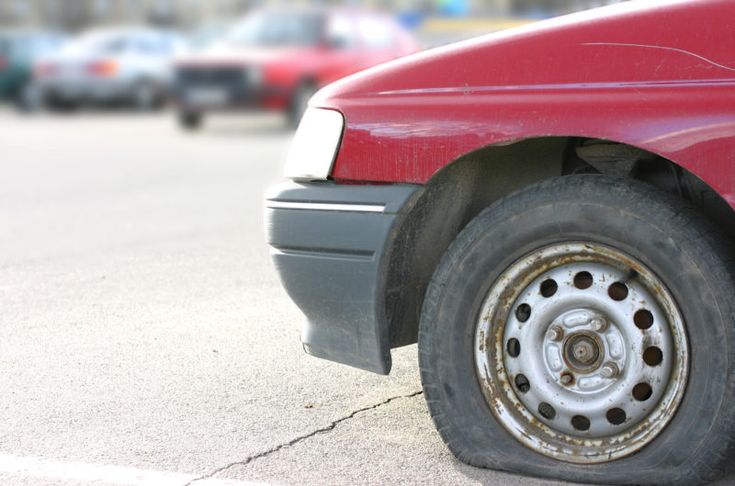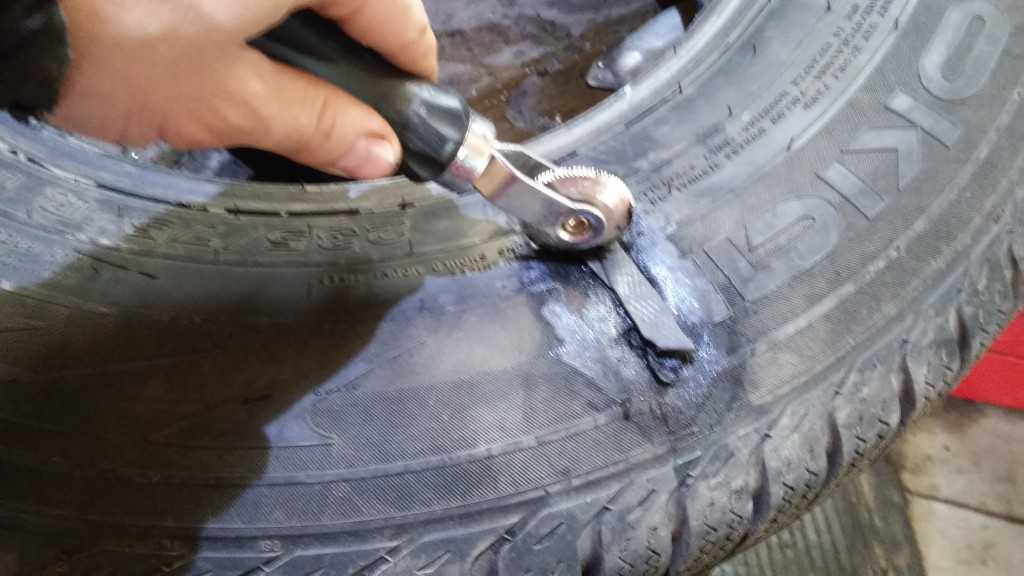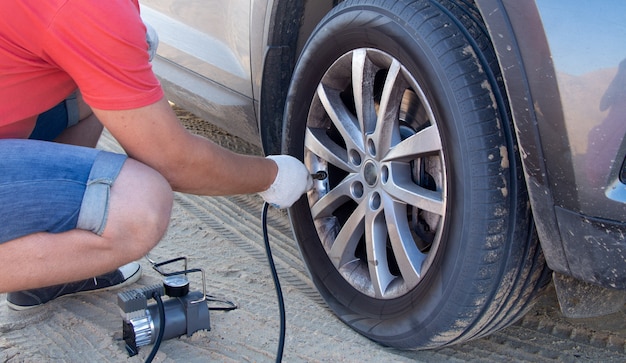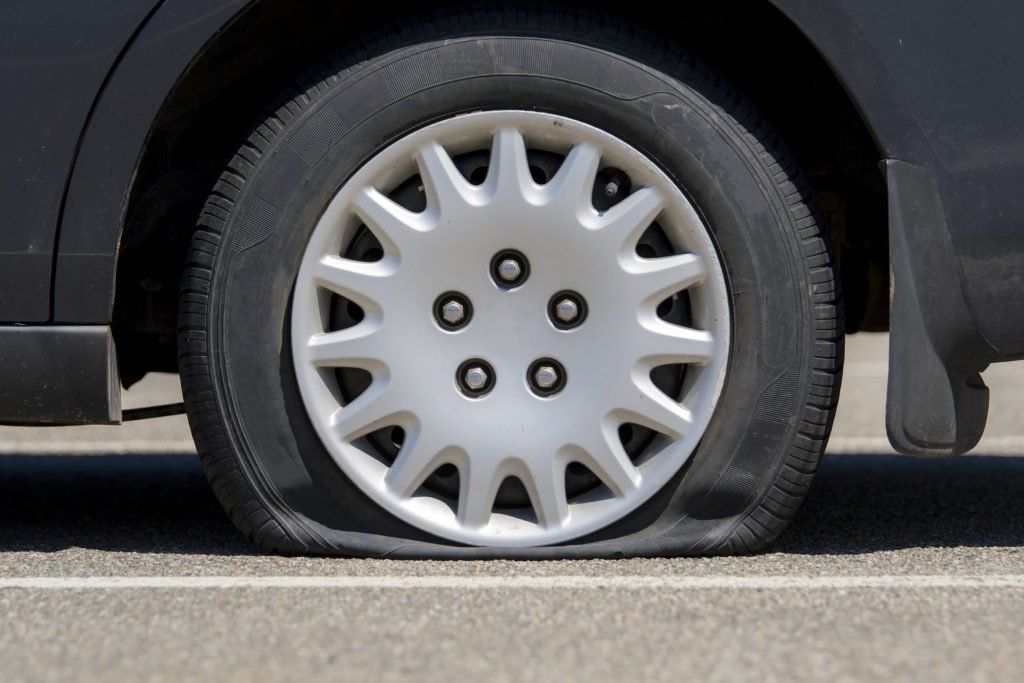Hide Show
Are you concerned about a tire that keeps losing pressure every so often? Do not worry any longer. Truro Nissan is the preferred Nissan dealership in Truro, Nova Scotia. It serves the greater Truro area, including Stewiacke, Brookfield, Valley, and Bible Hill. A slow leaking tire is undeniably inconvenient, but an experienced and certified tire specialist makes it only a temporary inconvenience. Truro Nissan has experienced certified mechanics. If you have a slow leak, increase the tire's pressure and drive carefully to Truro Nissan.
There are three main reasons why a tire may lose pressure. The wheel may have issues, the tire may be damaged, or could the effect of a drop in temperature. The two issues which cause a tire leak are a leaking valve stem and a damaged wheel.
Valve stems deteriorate with time and cause leakage because of exposure to chemicals. Hard knocks cause the wheel to lose its round shape, resulting in leaks.
Truro Nissan
130 Onslow Rd
Directions UPPER ONSLOW, NS B6L 5K6
Tire damage is usually caused by nails, bead damage, and road hazards. A nail causes a leak at the rate of 2 to 3 psi. The nail needs to be removed and the puncture repaired in a tire service centre. The bead forms the airtight contact between the tire and the wheel. Pieces of debris get in between the wheel and tire, creating a small gap that lets air out. As the tire ages, the rubber weakens and loses its elasticity, causing an air leak. An inexperienced technician may also improperly position the bead and cause the tire to lose air slowly. Road hazards such as potholes, rocks, and curbs may flex the sidewalls of a tire. Evidence of hard knocks includes sidewall bulges, cuts, and punctures. The damage may be either internal or external.
A nail causes a leak at the rate of 2 to 3 psi. The nail needs to be removed and the puncture repaired in a tire service centre. The bead forms the airtight contact between the tire and the wheel. Pieces of debris get in between the wheel and tire, creating a small gap that lets air out. As the tire ages, the rubber weakens and loses its elasticity, causing an air leak. An inexperienced technician may also improperly position the bead and cause the tire to lose air slowly. Road hazards such as potholes, rocks, and curbs may flex the sidewalls of a tire. Evidence of hard knocks includes sidewall bulges, cuts, and punctures. The damage may be either internal or external.
The easiest way to detect an air leak is to listen for a hissing sound or to feel the tire. A hissing sound is loudest at the source of the leak. Soapy water causes bubbles at the source of an air leak. If a tire is immersed in water, a stream of small bubbles forms at the leak location.
If a tire is immersed in water, a stream of small bubbles forms at the leak location.
Do you know that a tire that is more than 25% deflated increases a tire-related accident three-fold? Maintaining proper inflation ensures road safety, increases tire lifespan, and increases fuel consumption.
Truro Nissan is capable of fixing your tire problems utilizing the Service and Parts Centre. Please contact us and schedule an appointment at our service centre today. We will ensure to get your issue resolved quickly, allowing you to get back to your daily life safely.
First Name*
Last Name*
Contact Me by*
EmailPhone
Commercial Electronic Message Consent I consent to receive electronic messages from Truro Nissan containing sales promotions, product offers, special events and other information relating to their products and services. I understand that I may withdraw consent at any time. Please refer to our Privacy Policy or Contact Us for more details.
I understand that I may withdraw consent at any time. Please refer to our Privacy Policy or Contact Us for more details.
Nothing is more annoying than stopping to fill an under-inflated tire every week or two. Of course the first thing you look for is a puncture or tear. It’s normal for tires to lose a few PSI (pounds per square inch) of air due to temperature changes. However, if temperatures remain consistent and your tires constantly lose pressure, there is a leak that needs attention. Age, exposure to contaminants and stress can cause parts of your tire and rim (wheel) to fail. But what do you do if your tire is not visibly damaged? Consider that one of these problems is causing your flat tire:
On This Page
Running over any sharp object can puncture a tire. A tiny nail can puncture a tire, then fall out, causing a slow two-to-three PSI leak per week.
A tiny nail can puncture a tire, then fall out, causing a slow two-to-three PSI leak per week.
Made from rubber, valve stems can deteriorate over time. They also can be damaged from hitting a curb or even from an automatic car wash brush. Keep your valve stems clean and always replace the valve cap, but don’t overtighten it. Overtightening the cap can damage the valve core. Hand-tight is tight enough.
A ripped or torn tire is unsafe, especially if the rip is on the sidewall. Driving on a weakened tire, even if the leak is minor, is dangerous. Compound that with an under-inflated tire that can overheat and you’ve got a prescription for a blowout.
The bead is where a tire seals itself to the rim. The bead on older tires, or tires that have “dry-rot,” may have decreased elasticity and no longer seal properly. Beads can also be damaged when a tire is mounted or dismounted without the use of tire lube and beads can become chaffed, due to a corroded rim. The only fix for a damaged bead that cannot seal to the rim is a new tire.
The only fix for a damaged bead that cannot seal to the rim is a new tire.
Corrosion where the rim meets the tire bead is a common cause for a tire losing air pressure. Die-cast aluminum and magnesium alloy wheel are more susceptible to corrosion. Be sure your tire technician inspects the area where the wheel and bead seal before installing new tires. As well as being unsafe, even a new tire will never properly seal to a badly corroded wheel.
Often overlooked is wheel porosity, where air leaks through the rim itself. Usually caused by a poor casting or corrosion from using incorrect wheel weights, there is a proper, accepted way to repair this type of leak. Don’t inject your tire with tire sealant to fix a leaky rim. It can be extremely difficult to clean out and can ruin a repairable tire or tire pressure monitoring system sensor.
You are playing a dangerous game if you think that by over-inflating a tire with a slow leak, you will increase the time between fills. Besides a rough, noisy ride due to stiff sidewalls and tread, an overinflated tire wears quicker, and overall tire performance suffers. Rigid, overinflated tires are unstable, lose traction easily due to reduced tire-read-to-road contact area (think of a basketball) and make sidewalls vulnerable to blowouts when hitting a pothole.
Besides a rough, noisy ride due to stiff sidewalls and tread, an overinflated tire wears quicker, and overall tire performance suffers. Rigid, overinflated tires are unstable, lose traction easily due to reduced tire-read-to-road contact area (think of a basketball) and make sidewalls vulnerable to blowouts when hitting a pothole.
Anything that can damage a tire or rim — punctures from a nail, metal fragments, broken glass, a piece of wood, a cracked rim or sidewall rips from hitting potholes or a curb — are considered road-hazard damage. Only your tire technician can determine which of these are repairable.
So, as you can see, there are a lot of reasons why your tire can go flat. Inspect your tires and check air pressure at least once a month. Properly inflated tires last longer, wear more evenly and are safer to drive on.
Bob Lacivita
Bob Lacivita is an award-winning ASE and General Motors auto technician, educator and freelance writer who has written about DYI car repairs and vehicle maintenance topics. His work has been featured in The Family Handyman, a Reader's Digest book and Classic Bike Rider magazine. He has been a career and technical educator for 25 years teaching automotive technology, as well as writing state, federal and organizational foundation grants. He also helped design a unique curriculum delivery model that integrates rigorous, relevant academic standards seamlessly into career and technical education.
His work has been featured in The Family Handyman, a Reader's Digest book and Classic Bike Rider magazine. He has been a career and technical educator for 25 years teaching automotive technology, as well as writing state, federal and organizational foundation grants. He also helped design a unique curriculum delivery model that integrates rigorous, relevant academic standards seamlessly into career and technical education.
It is not uncommon for a vehicle to continue performing its tasks even after being damaged. But after spending all the reserves, it will definitely stop and require repairs. There are a number of reasons why tires deflate.
Tire cut / Photo: car.ru
surfaces. Tubeless tires will still be able to hold air for a while, but will soon need to be pumped up, repaired or replaced. nine0004
Microscopic cracks in tires / Photo: rosava.com
It is quite difficult to detect the appearance of microscopic cracks without special equipment. Indeed, often car owners cannot see cuts or punctures during a visual inspection of tires, while the latter gradually deflate or inflate at air temperatures above 25 degrees Celsius. And even if it concerns only one of the four wheels, it probably has minor damage, roughness and wear. nine0004
It is not possible to repair a tire with patches, so alternative solutions should be considered:

It is important to note that tubeless tires have a much higher margin of safety, so they descend more slowly. Even with the appearance of microcracks, such tires retain air longer and continue to be used. If the tire inflates or deflates on its own within a few weeks, you should go to a specialist from a car repair shop for help, where a microcrack will be found. nine0004
The passage of air on the wheel through the nipple / Photo: shiny-info.ru
And although many car owners do not attach much importance to this accessory, often the problem of a flat tire is connected specifically with the nipple. Such a product may fail if the car is often subjected to increased loads, or the driver often develops critical speeds.
In summer, the part is exposed to additional environmental influences, as tire pressures rise rapidly, which leads to numerous defects and malfunctions. Replacing the nipple does not require a lot of money, so this is the most justified way out of the situation. And in order to prevent such troubles in the future, it is logical to think about installing a tire pressure sensor in order to monitor inflation rates. nine0004
And in order to prevent such troubles in the future, it is logical to think about installing a tire pressure sensor in order to monitor inflation rates. nine0004
Stones and dirt in tires / Photo: newsbuzz.ru
This category includes small particles of sand, dirt, stones, grass and other objects that tires encounter on the road. The listed debris is gradually clogged in the tread pattern, breaking the hermetic connection of the rim with the rubber joint.
Therefore, a polluted car is not only unpresentable, but also dangerous. third-party objects adversely affect important parts and mechanisms of the vehicle. nine0004
Also, when contact with foreign objects, dents can appear on the discs, provoking tire problems.
It is better not to use old tires / Photo: xlom.ru
During operation, rubber loses its initial properties and stops holding pressure normally. Especially if its age exceeds 3 years. Over time, the tire undergoes deformation, loses its elasticity and becomes covered with microcracks, which will certainly entail related problems, including pressure relief. nine0004
Especially if its age exceeds 3 years. Over time, the tire undergoes deformation, loses its elasticity and becomes covered with microcracks, which will certainly entail related problems, including pressure relief. nine0004
In such cases, a new set of tires has to be bought, since the current one can no longer perform its functions and is not suitable for further use.
Rusty rim / Photo: drive2.ru
Under the influence of precipitation, long winters or rainy autumn, rust appears on the rims. This is another additional cause of premature tire wear and a reason to install a pressure sensor in order to detect problems in time. Corrosion on the rims prevents the rubber from fitting properly, causing the wheels to gradually deflate. nine0004
The car is in the garage for a long time / Photo: dixnews.ru
Another problem due to which the tires can be flat. If the car is parked or in the garage for a long time, its mechanisms will begin to fail. Prolonged downtime leads to a loss of elasticity and a deterioration in the condition of tires, due to which microcracks form on their surface, and the pressure in the wheels gradually decreases.
If the car is parked or in the garage for a long time, its mechanisms will begin to fail. Prolonged downtime leads to a loss of elasticity and a deterioration in the condition of tires, due to which microcracks form on their surface, and the pressure in the wheels gradually decreases.
Sometimes you have to drive inherited cars. In this case, not everyone thinks about the importance of buying new tires or upgrading old ones. nine0004
Tire problems are very annoying. But there are more than serious problems , in the event of which the driver must contact the service station.
Like
Photo www. tgamobility.co.uk
tgamobility.co.uk
It is not uncommon for tire pressure to decrease gradually over several days. You inflate them to the required level, but the tires again pass air over time. In this case, you should contact the tire shop, where they will determine the cause of the pressure loss. There may be several. We will look at the problems with tubeless tires, since most modern cars are equipped with them. nine0004
Ivan Flyagin
Disk damage usually leads to its deformation. This comes from hitting the wheel at high speed on the edge of the pit or on a steep and hard bump. Due to the loose fit of the tire to the rim, a partial air leak occurs. Keep in mind that damage may be hidden on the inside of the rim, while the outside of the wheel will look brand new, without any visual flaws.
Another possible cause of a gradual loss of pressure in tires is the depressurization of the valve (or nipple) as a result of mechanical impact, or the ingress of tiny dust particles into it. If the mechanism is in good condition, then air can leak in the place where its valve is attached to the disk. Sometimes you can fix the problem by pumping the spool with a few sharp and short presses. nine0004
If the mechanism is in good condition, then air can leak in the place where its valve is attached to the disk. Sometimes you can fix the problem by pumping the spool with a few sharp and short presses. nine0004
Quite often the tire “catches” a nail or other sharp and large object on the road, which safely gets stuck in the place of the puncture. In this case, it serves as a stopper, only not completely sealed, so the air will slowly but surely bleed. If a nail hits a tire with a camera, it instantly bursts, and at high speed this is fraught with an emergency.
A tire can be damaged not only on the tread side, where the thickest and most durable rubber layer is located. Its side is also vulnerable to contact with sharp objects. Usually in this place there are cuts from friction on curbs, the edge of the track, protruding rebar and other hard and sharp protrusions. How quickly the rubber will lose air depends on the depth of the scratch.![]()